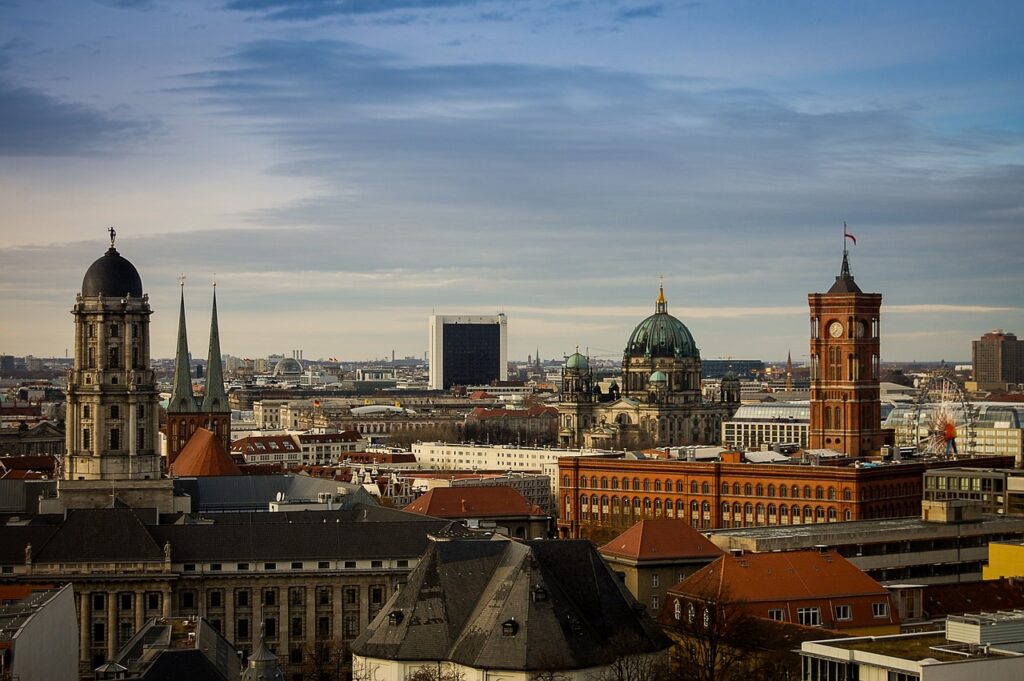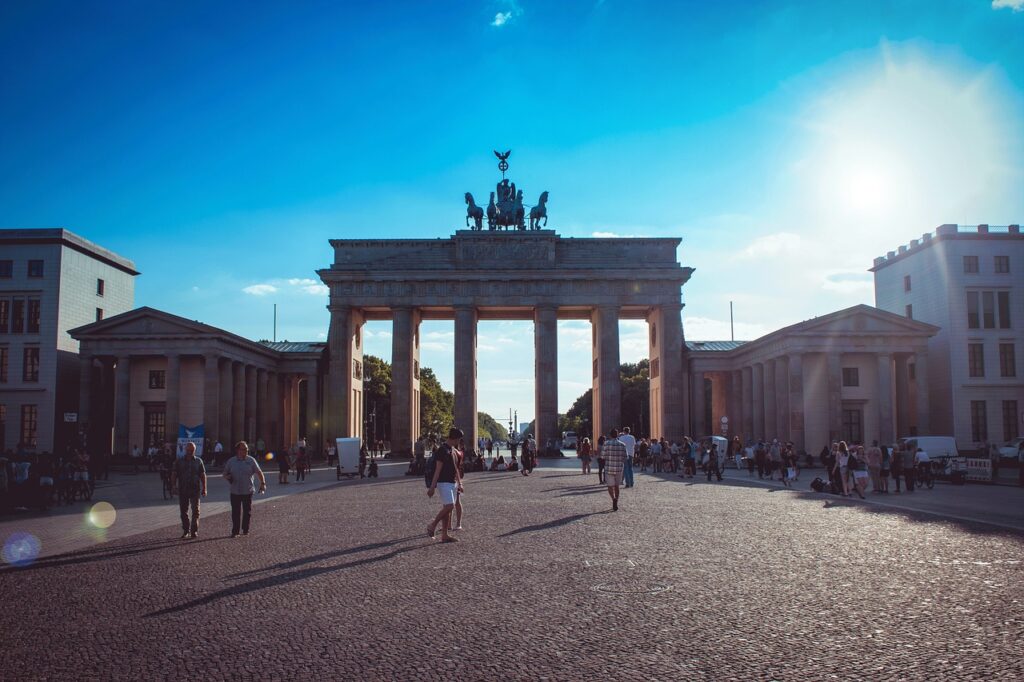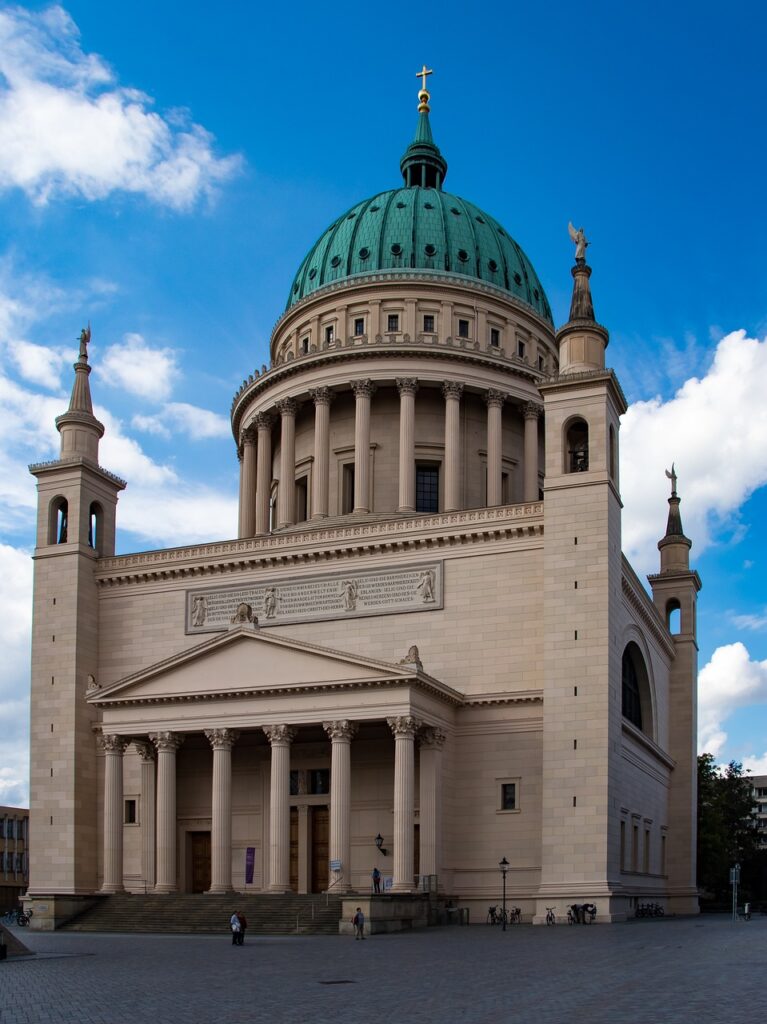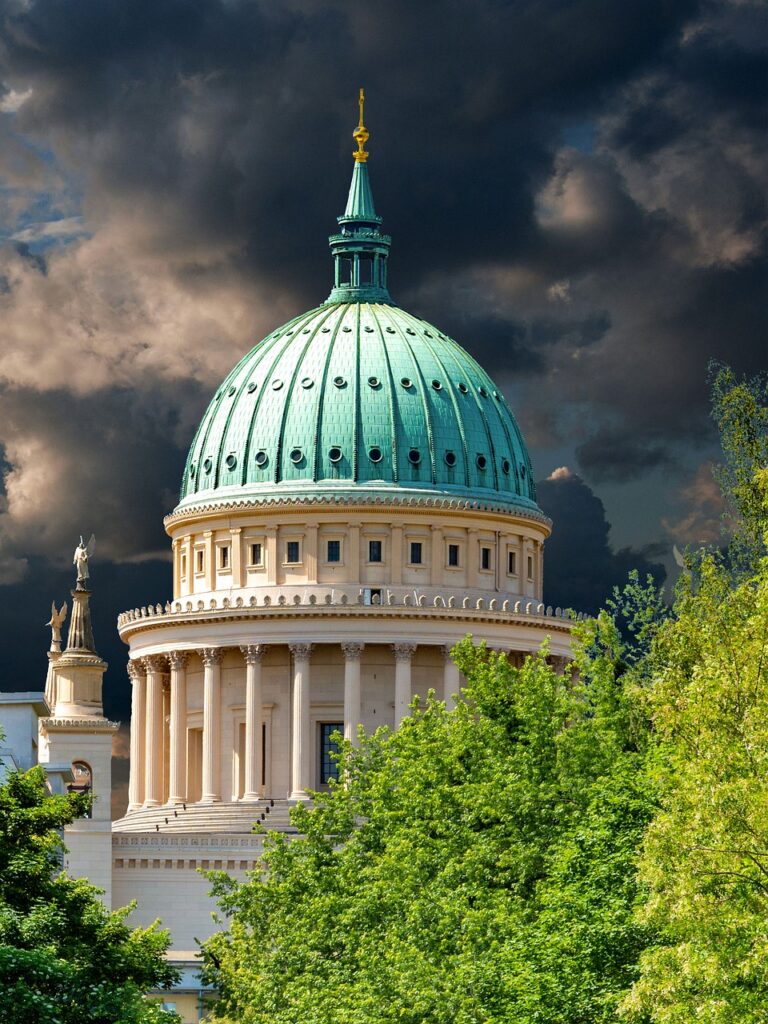Today it is a pleasure to have Matti Geyer to HistoFreak as a guest writer! Matti is a local Berliner and was born in the eastern side of the city. As a local himself, Matti was always fascinated with the history of Germany, Prussia, and particularly with many past stories about the Berlin. In 2008, he turned his passion into a career by becoming a local tour guide. In today’s article, Matti is going to tell us about the history of Berlin and Postdam. These cities were considered important during the rule of the Prussian empire in the 1700s.
Unveiling Prussia’s Dual Capitals: Berlin and Potsdam


Prussia was a German state located on North European plan. It formed the German empire when Prussia successfully unified the German states in 1871. The Kingdom of Prussia played a big role in shaping modern Germany in terms of city redevelopment and construction, especially in Berlin and Potsdam.
In 1701, Berlin emerged as the preeminent royal seat of the Hohenzollern dynasty under Friedrich I of Prussia, marking the zenith of its political prowess within the Kingdom of Prussia and later the German Empire. Meanwhile, Potsdam, designated as the secondary residence since the time of Friedrich Wilhelm, the “Great Elector,” stood as a cultural and political counterpart to Berlin. This article delves into the nuanced functions of these dual capitals and their architectural embodiments under the reigns of Friedrich I, Friedrich Wilhelm I, and Friedrich II.
Berlin’s Evolution: From Humble Beginnings to Royal Eminence
Berlin, tracing its origins back to 1237 alongside its counterpart Cölln, initially played a secondary role compared to neighboring towns like Spandau and Brandenburg. However, by the 15th century, Berlin emerged as a thriving trading hub. In 1440, Elector Friedrich II, also known as “Eisenzahn” (Iron Tooth), defied opposition to construct a palace in the burgeoning Berlin-Cölln, symbolizing Hohenzollern dominance.
Under Joachim II Hector, Berlin became the permanent residence in 1539, marking a shift towards significance. After the devastation of the Thirty Years’ War, Frederick William, the “Great Elector,” reconstructed the palace and initiated urban beautification projects.
By the late 17th century, Berlin possessed a pivotal governmental structure in the city palace and prominent boulevards like Unter den Linden. This foundation laid the groundwork for Berlin’s elevation to royal residence under Friedrich I in 1701, setting the stage for its future as the capital of Prussia and later Germany.
Potsdam: The Rise of a Regal Retreat
Potsdam, first documented in 993, harbored a low-lying castle since the 7th century, yet it remained overshadowed by other towns. It was Elector Friedrich Wilhelm who, amidst the Thirty Years’ War turmoil, elevated Potsdam alongside Berlin as a secondary residence.
The Great Elector’s decision to systematically transform Potsdam into a residence city molded it into a realm shaped solely by royal decree. This vision prioritized Potsdam’s scenic landscape, crafting a “total artwork” integrating gardens, pristine nature, waterways, and palaces symbolizing the Elector’s dominion. Notably, the proximity to electoral hunting grounds influenced this choice. Friedrich Wilhelm commenced a grand transformation, replacing the old castle with a new palace and geometrically designing the city’s layout.
By 1688, Potsdam boasted an absolutist urban panorama, multiple hunting lodges, and a permanent summer residence, becoming a regular abode for the Elector alongside Berlin. While the court society primarily resided in Berlin-Cölln, Potsdam hosted family celebrations, gradually evolving into a secondary residence. Friedrich Wilhelm’s last years witnessed the full court’s relocation to Potsdam. He enacted the Edict of Potsdam, offering refuge to Huguenots and shaping the region’s trajectory.
Friedrich I of Prussia: Architectural Symbolism of Sovereignty

Upon Friedrich III’s coronation as the first King in Prussia in 1701, Berlin ascended to royal residency and became the capital of the Kingdom of Prussia, marking its inaugural European prominence. Friedrich I’s aspiration to emulate Louis XIV’s grandeur manifested in two architectural marvels: the city palace and the arsenal.
The arsenal, designed to rival the Louvre’s grandeur, symbolized Berlin’s desire to match Paris’s significance. Completed by 1706, it housed armaments for 150,000 soldiers, suggesting its role as a strategic military hub.
Meanwhile, the city palace underwent a transformative process under Friedrich I’s reign, evolving into a grand Baroque palace with 1,200 rooms. Its central location within Berlin emphasized its monumental importance as the royal and later imperial residence.
Despite his father’s establishment of Potsdam as a secondary residence, Friedrich I’s focus remained primarily on Berlin. While he expanded the Potsdam city palace and enhanced its gardens, the Berlin city palace retained its status as the primary seat of governance.
In summary, Friedrich I’s architectural endeavors in Berlin symbolized his aspirations for European prominence, while Potsdam remained a secondary residence with limited political and architectural influence during his reign.
Friedrich Wilhelm I of Prussia: Urban Development and Military Focus
Friedrich Wilhelm I’s governance significantly shaped Berlin and Potsdam, prioritizing economic and military objectives over architectural grandeur. His frugality and simple lifestyle, influenced by pietistic and Calvinistic beliefs, contrasted with the opulence of his predecessors.

Economically driven, Friedrich Wilhelm favored functional urban planning, expanding Berlin with baroque designs. He transformed the Lustgarten into a parade ground and orchestrated the development of Dorotheenstadt and Friedrichstadt, implementing strict street plans before settlers arrived. Notable additions included the creation of key squares like the Pariser Platz, laying the groundwork for Berlin’s future urban landscape.
Friedrich Wilhelm I’s decision to establish Potsdam as a garrison city had profound implications for its development. The influx of soldiers necessitated extensive urban expansion, leading to the construction of new barracks and the enlargement of the city’s footprint.



Potsdam’s growth was meticulously planned, with two major expansions initiated to accommodate the burgeoning military population. The construction of the Dutch Quarter and the building of three significant churches, including the Garnisonkirche (The Garrison Church) and Nikolaikirche (St Nicholas Church), exemplified Friedrich Wilhelm’s desire for aesthetic and functional enhancements. Potsdam’s strategic importance and architectural evolution underscored its significance as a symbol of royal power, despite being overshadowed by Berlin politically.
In conclusion, Friedrich Wilhelm I’s reign witnessed urban expansion and military-driven development in both Berlin and Potsdam. While Berlin’s growth reflected economic and military priorities, Potsdam emerged as a crucial garrison city with notable architectural additions, emphasizing the dual role of both cities within the Prussian realm.
Friedrich II of Prussia: Architectural Expressions of Power in Berlin and Potsdam

Upon Friedrich Wilhelm II’s death in Potsdam, it was expected that Berlin would regain its status as the primary royal residence. However, Friedrich II initially favored Charlottenburg and later Potsdam for his summer and winter residences, using the Berlin City Palace primarily between Christmas and his birthday on January 24th. Despite its use by royal authorities, Friedrich II aimed to restore courtly splendor and showcase Prussia’s power through architecture. Upon assuming power in 1740, he promptly began planning the Forum Fridericianum, comprising the Opera House, St. Hedwig’s Cathedral, Royal Library, and Prinz Heinrich Palace, symbolizing his vision of the state as a nexus of monarchy, art, and science. Despite independent designs, they formed a cohesive architectural expression of Prussian Enlightenment in Berlin.

The Opera House, constructed between 1741 and 1743 by Georg Wenzeslaus von Knobelsdorff, was Europe’s first freestanding opera/theater building, reflecting Enlightenment ideals and neoclassical architecture. St. Hedwig’s Cathedral, built between 1747 and 1773, was Prussia’s first new Catholic church since the Reformation, symbolizing religious tolerance and Prussian military strength post-annexation of Silesia. The Royal Library, modeled after Josef Emanuel Fischer von Erlach’s design for the Viennese Hofburg, despite its backward-looking choice, contributed to Prussia’s Enlightenment architectural ensemble.
Construction of a new royal palace, completed in 1766 by Johann Boumann, served as the Humboldt University’s main building from 1810, completing Berlin’s Bebelplatz as a hub of public buildings. The Forum Fridericianum’s buildings, though individually designed, collectively embodied Prussian Enlightenment values, merging culture, power, and education.
However, Friedrich II favored Potsdam as his residence and center of governance, transforming it into a “Versailles of the North.” He moved to the Potsdam City Palace in 1743, converting it into his winter residence, alongside projects like Sanssouci Palace, reflecting his Enlightenment ideals through architecture.


Sanssouci, primarily Friedrich’s private residence, exemplified Rococo aesthetics, lacking official representation spaces. Despite its personal nature, it symbolized Prussian power and cultural sophistication. Additionally, Sanssouci’s gardens featured numerous architectural elements reflecting antiquity, such as obelisks and colonnades, symbolizing the Hohenzollern dynasty’s might and cultural aspirations.
The New Palace, Friedrich’s grandest architectural project, completed in 1769, served as a monumental demonstration of Prussian power and wealth. Modeled after Hampton Court, it featured statues glorifying Prussia’s rulers and military achievements, emphasizing Friedrich’s vision of magnificence and dynastic continuity.
Friedrich’s architectural interventions in Potsdam, like the Brandenburg Gate and the Alten Market redesign, showcased royal power and tradition, highlighting his preference for Potsdam over Berlin as a seat of power. Despite this, Potsdam remained a secondary residence, with its significance overshadowed by Berlin’s administrative centrality.



Overall, Friedrich II’s architectural endeavors in Berlin and Potsdam aimed to visually reinforce Prussia’s cultural sophistication, military prowess, and dynastic continuity, positioning Prussia as a leading European power during the Enlightenment era.
Conclusion
The first three Prussian kings made diverse yet pivotal decisions for Berlin’s urban development as their kingdom’s capital.
However, a dual relationship between Berlin and Potsdam emerged under all rulers. Potsdam, increasingly integral to the capital region, saw varied importance over time, with Berlin retaining political primacy under Friedrich I but Potsdam gaining significance as a royal residence under later kings. Despite not being the official capital, Potsdam’s architectural endeavors, including expansions by Friedrich I and Friedrich Wilhelm II, reflected its growing importance. Friedrich the Great’s reign marked significant residence buildings, notably the New Palace and the Brandenburg Gate, both serving capital functions.
Berlin and Potsdam, shaped differently by the Hohenzollerns, must be viewed together to understand Prussia’s capital and residence architecture during this period. Potsdam became indispensable to the Brandenburg-Prussian capital region, alongside Berlin.
Another shoutout to our guest article in this post, you may visit Matti Geyer’s website and social media:
Website: https://www.toursofberlin.com/
Instagram: https://www.instagram.com/berlin_with_matti/
